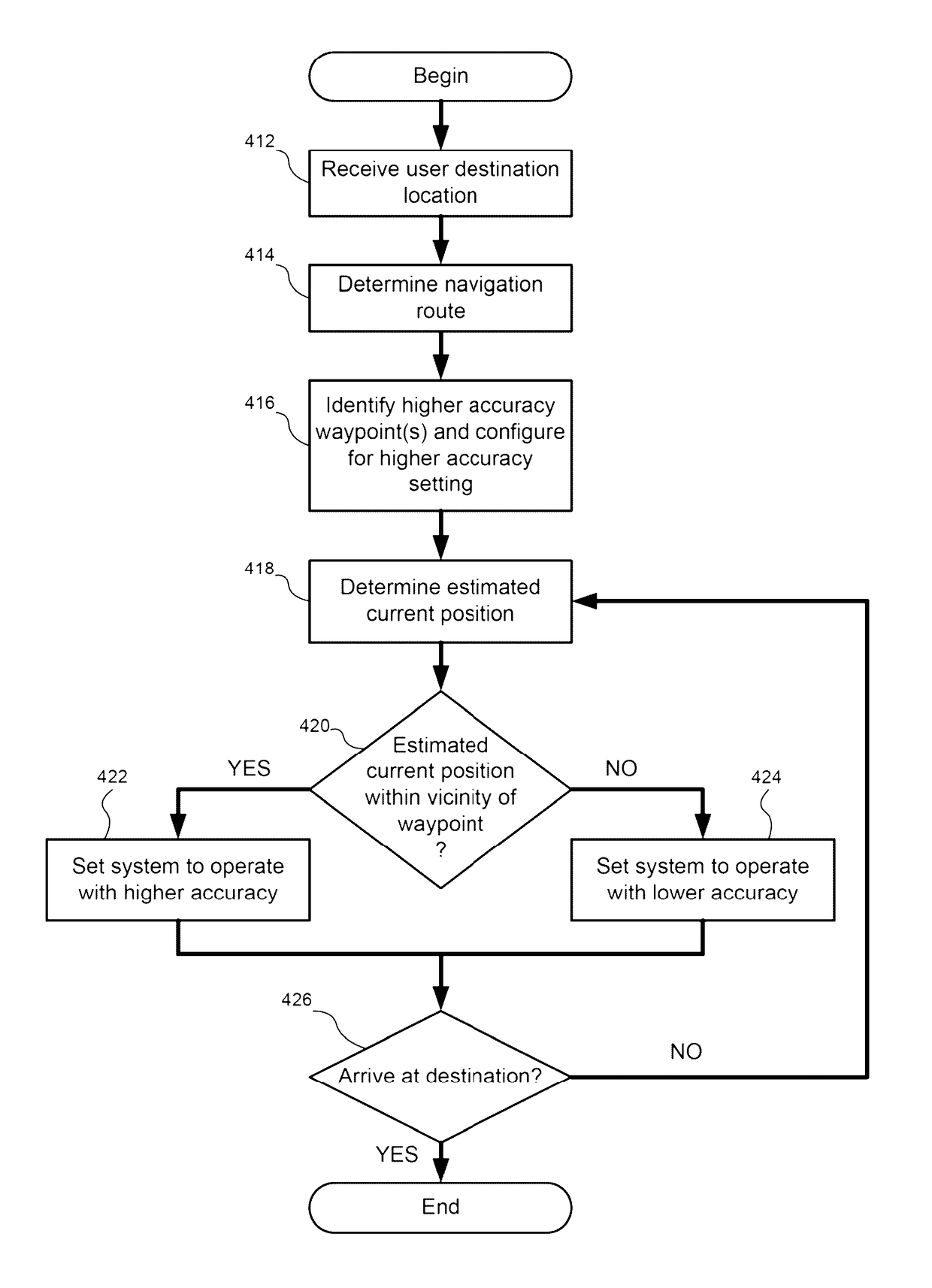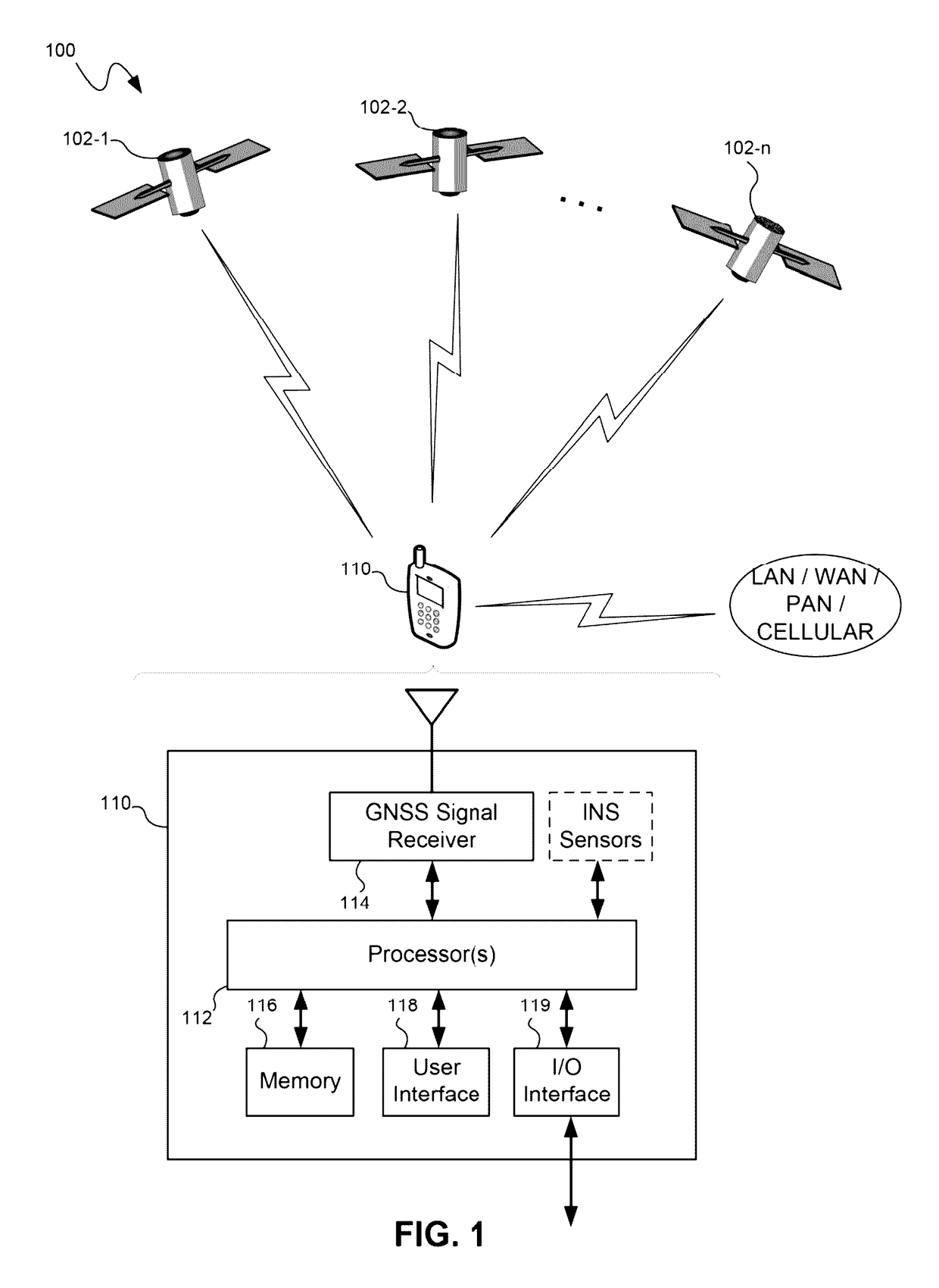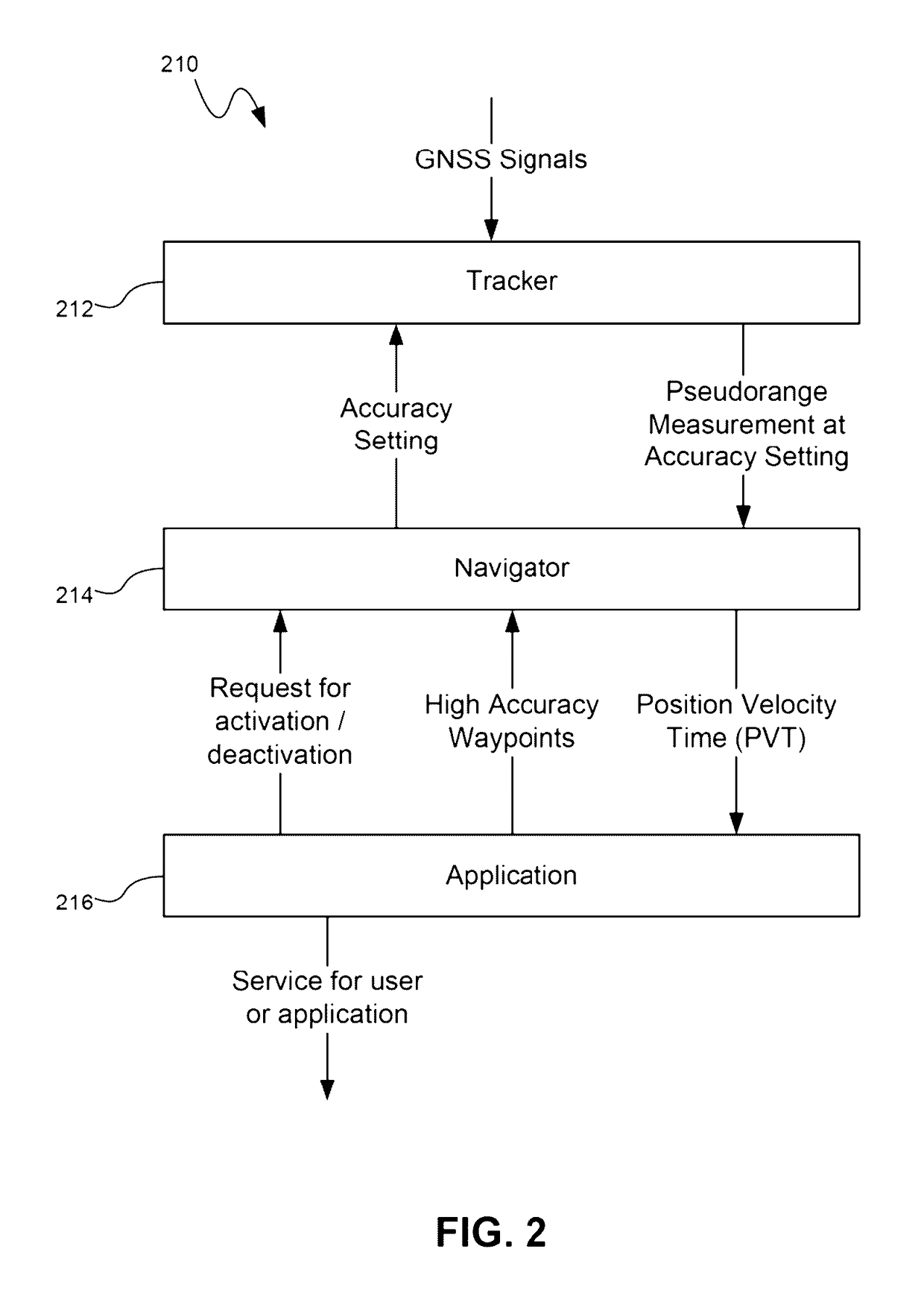Navigation system and method with location-aware accuracy and/or power adjustments
- Summary
- Abstract
- Description
- Claims
- Application Information
AI Technical Summary
Benefits of technology
Problems solved by technology
Method used
Image
Examples
Embodiment Construction
[0016]In a navigation system and method, consistent with embodiments of the present disclosure, location-aware adjustments may be made to the accuracy and / or power of the navigation system by changing at least one accuracy and / or power setting of a navigation system receiver in response to at least one characteristic of a navigation route and / or an estimated current position of the receiver. By providing location-aware accuracy and / or power adjustments, the accuracy may be increased when a higher accuracy is desired and may be decreased (with lower power) when a lower accuracy is sufficient based on the receiver location. A higher accuracy setting may be used, for example, when the estimated current position of a navigation system receiver is within the vicinity of a waypoint along the navigation route and a lower accuracy setting may be used at other times to reduce power consumption. Thus, power consumption may be improved with negligible impact on the accuracy and / or accuracy may...
PUM
 Login to View More
Login to View More Abstract
Description
Claims
Application Information
 Login to View More
Login to View More - R&D
- Intellectual Property
- Life Sciences
- Materials
- Tech Scout
- Unparalleled Data Quality
- Higher Quality Content
- 60% Fewer Hallucinations
Browse by: Latest US Patents, China's latest patents, Technical Efficacy Thesaurus, Application Domain, Technology Topic, Popular Technical Reports.
© 2025 PatSnap. All rights reserved.Legal|Privacy policy|Modern Slavery Act Transparency Statement|Sitemap|About US| Contact US: help@patsnap.com



